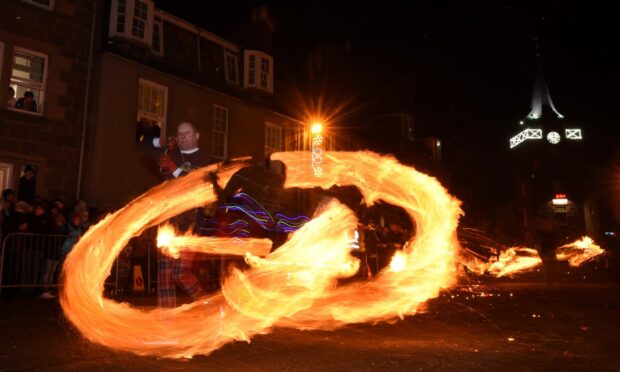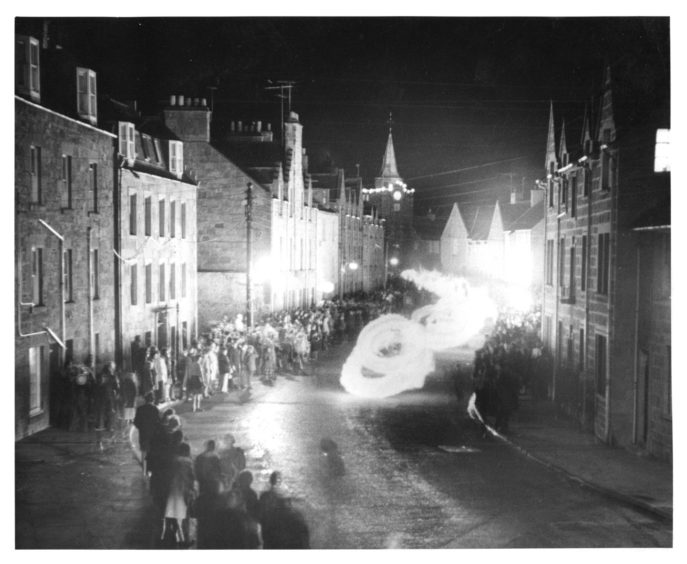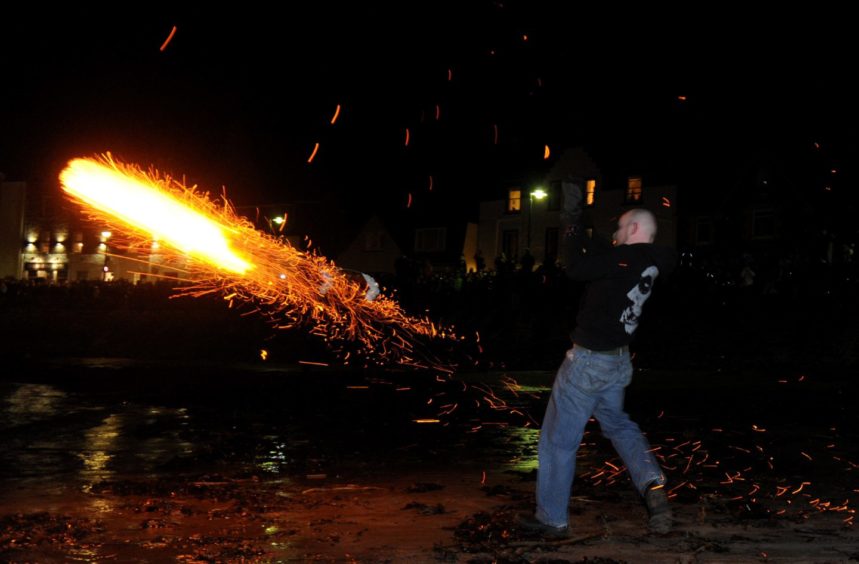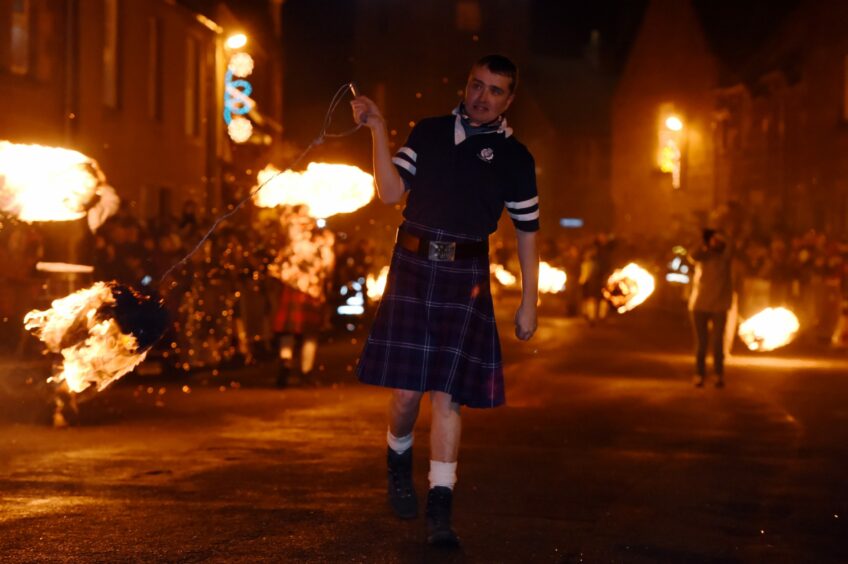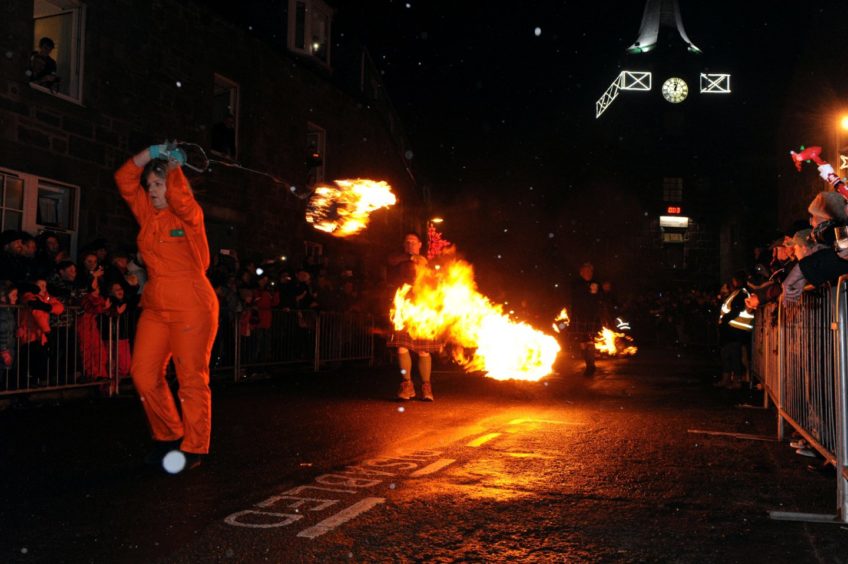The spectacular Stonehaven Fireballs have ushered in the New Year for more than 100 years.
The ceremony has piqued interest in visitors from all over the world and, although the event was put on hiatus because of Covid 12 months ago, three balls were swung in the garden of a house on the Old Pier and others were thrown into the harbour to maintain the tradition that commenced in 1908.
Martin Sim, who has chronicled the history of the event, with which he has a long and dedicated association, has revealed there was even a proposal to bring the fireballs to Murrayfield – at the Scotland v Romania match in 1999 – but the idea was eventually scrapped due to health and safety concerns.
However, with meticulous planning and the ardent enthusiasm of the coastal community, the fireballs are an integral part of the New Year landscape.
Nowadays, everything fireball-related is methodically organised as a way of ensuring the safety both of the participants and the public in Stonehaven and that is why the organisers have “reluctantly” taken the decision to cancel this year’s festivities with cases of the Omicron variant on the rise.
But it hasn’t always been that way and Martin’s new book outlines some of the more raucous, rambunctuous ceremonies from the 1970s and 1980s.
Everyone’s welcome at Swingers’ party
He told me: “I have had the amazing good fortune to see the Fireball Ceremony every year since I was five years old – and that was 70 years ago.
“When I was young, going down to see the fireballs was almost as good as Christmas – but it was slightly terrifying as well, because it was a fairly wild event in the ’50s, ’60s and ’70s.
“When I realised in ’77 that I could become a ‘Swinger’, there was eager anticipation.
“It was a dream fulfilled.”
“In the early days – right up to when the barriers were used in 1991 – the event was fairly rough, with a lot of alcohol being consumed on the night.
‘Playing Chicken’ with the Swingers was a great game, as was a certain amount of fighting, shouting, throwing fireworks and pushing folk towards the swingers (which occasionally caused a few scorch marks).
“But this stopped when the barriers were used and the ceremony is now a very friendly event with a lot of good cheer felt by the many visitors who attend.”
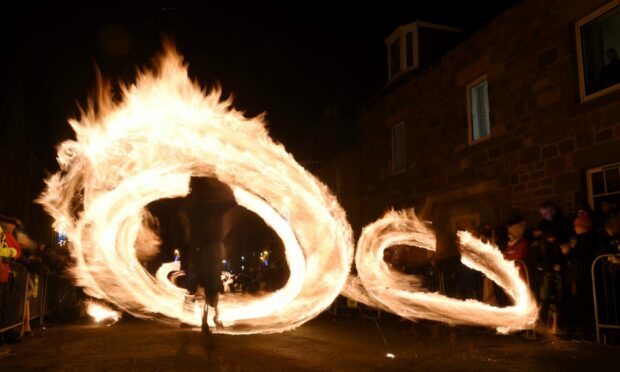
The reason for the barriers had become painfully obvious the previous year when the fireballs gained a significant amount of media exposure.
As Martin said: “In 1990, the event went ‘live’ with a crew from Grampian Television setting up their cameras, lights and generators.
“The attraction of the cameras and the pre-publicity that Grampian TV gave the event ensured that there was a record-breaking crowd.
“However, the huge numbers caused a few problems. It was very difficult for the swingers to keep any pace going or keep the procession line intact.
“Swingers were forced to stop on a number of occasions as the crowd surged forward.
“Later, the police expressed grave concerns about the overall safety of the event, both from the (angle of) crowd control and from the lack of separation which there was between the crowd, the swingers and fireballs.
“The fact that there was no incident or a serious accident was more to do with luck than with good practice (in fact, one ‘ball’ did disintegrate).”
It was time for an overhaul and for increased precautions.
Martin and his colleagues responded quickly to the problems and their actions were the catalyst for the fireballs gaining a heightened profile all over the globe in subsequent years.
He might be too modest to take an excess of credit for the success of the event, despite his yeoman service to the community since the 1960s.
Instead, he pointed out a few of the stalwart figures whose labours have guaranteed the festival has not only survived but thrived in recent decades.
He said: “Jack Emslie, his brother, Bill Emslie, and Jock Shepherd have all helped to keep the ceremony going when the support for it was fairly thin.
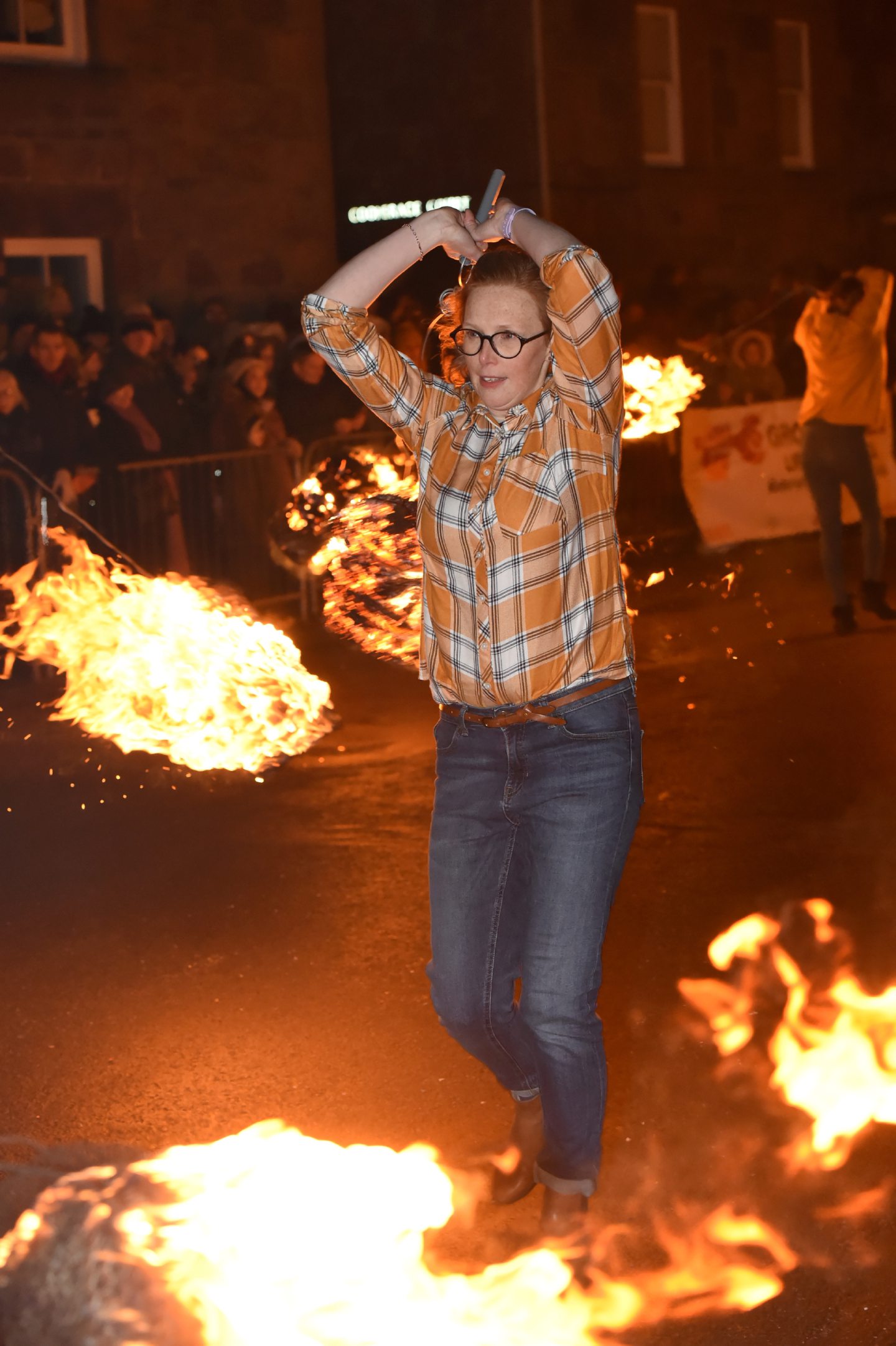
“But really, everyone who has ever taken part in it has helped to keep it going.
“And now, it genuinely is a community effort with marshals, the pipe band, the police, the first aiders and the street sweepers all doing their bit and playing their part to allow the event to take place.
“Without all of them and the financial support which we receive from the local business community, it couldn’t go ahead.”
One of the most memorable Hogmanays was that which hastened the arrival of the new millennium at the end of 1999 and everything came together beautifully in Stonehaven, again with the boost of TV coverage.
It’s the fireballs that are the important thing. It is the noise that they make, it’s the smell they make, it’s the sight that they are. It is the fireballs.”
Martin Sim
Martin said: “To mark the start of the 21st century, 50 swingers took part and the ceremony was covered by seven BBC cameras and broadcast worldwide.
“At least 6,000 spectators watched on as four digital clocks helped to give that vital countdown effect to the magical 00.00!
“The weather was ideal and everything went according to plan. The general feeling from those present was that the celebrations were equal in atmosphere to anything else which was happening anywhere in the world.
“That year was the last of Bill Emslie’s close involvement with the running of the event, but he handed that duty over to his daughter Lynn.”
And there is another reason why the fireballs flourish: quite literally in this case, the torch keeps getting handed over from one generation to the next.
The planned ceremony to mark the start of 2022 may have been cancelled, but there’s plenty to enjoy in Martin’s new work about the way the pyrotechnics have attracted visitors from all over the world.
As he makes clear, there is little resemblance between the modern fireballs, which draw thousands of people to Stonehaven, and the early days when the occasion was held strictly to entertain local residents.
He said: “We don’t have a record of how far people have travelled to see the ceremony, but I know of groups who have made the journey here from Russia, Australia, New Zealand, Korea and China.”
It’s a strange type of party without any guests. But in the new world of Zoom calls and remote concerts and festivals, Stonehaven has adapted.
And besides, as Martin insisted: “We have always said that we don’t do it to be watched, we do it for ourselves.
“It is just part of your being that you swing a fireball at Hogmanay, even if no one is watching you.
“It’s the fireballs that are the important thing. It is the noise that they make, it’s the smell they make, it’s the sight that they are. It is the fireballs.”
Nobody is arguing with that.
- The booklet is available from Martin Sim, from Giulianotti’s Ice Cream & Chocolate shop, Stitch ‘n’ Print Stonehaven, The Tolbooth Museum and through the Fireball Association website for £5. All profits will go to the Fireball Association.
